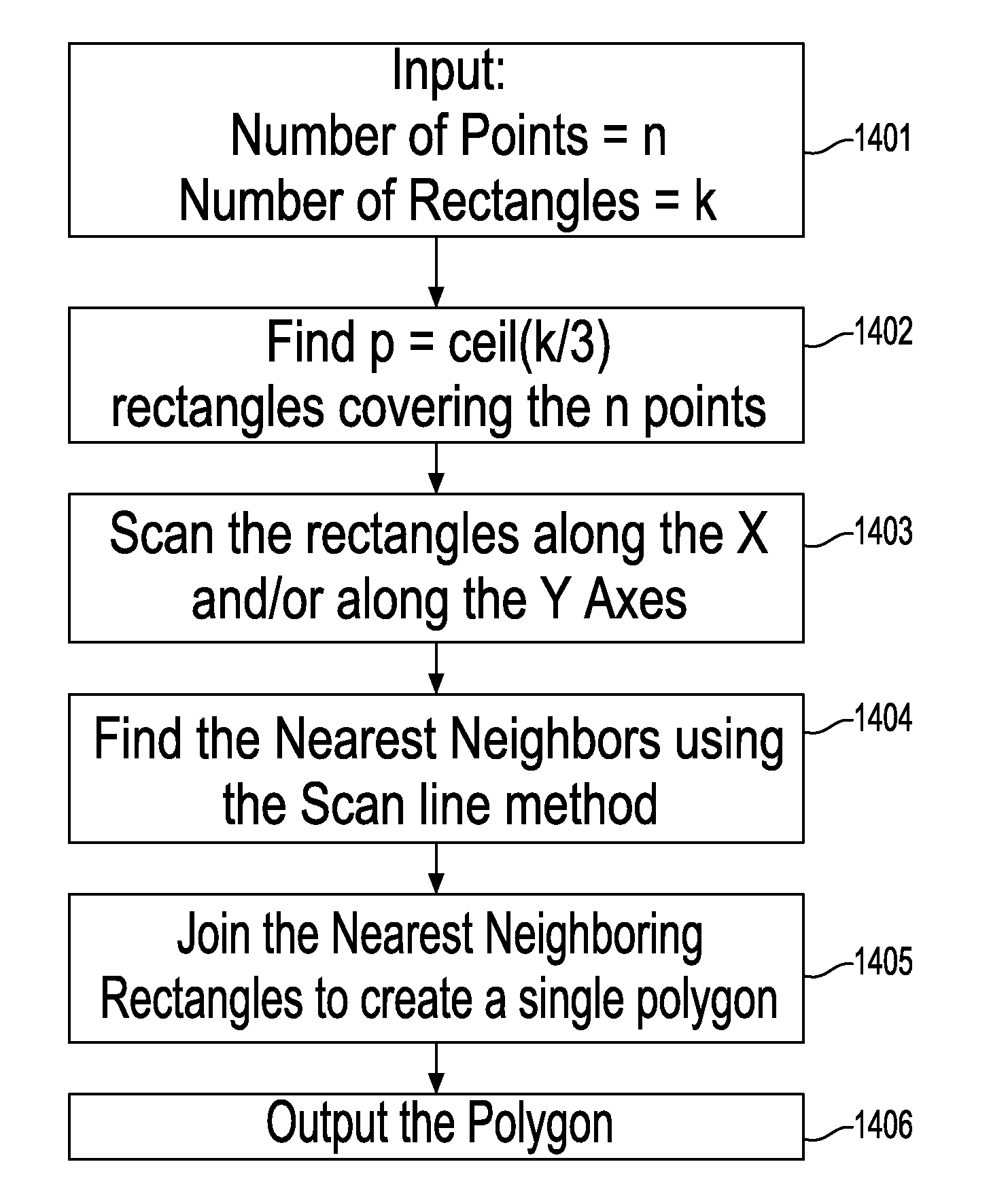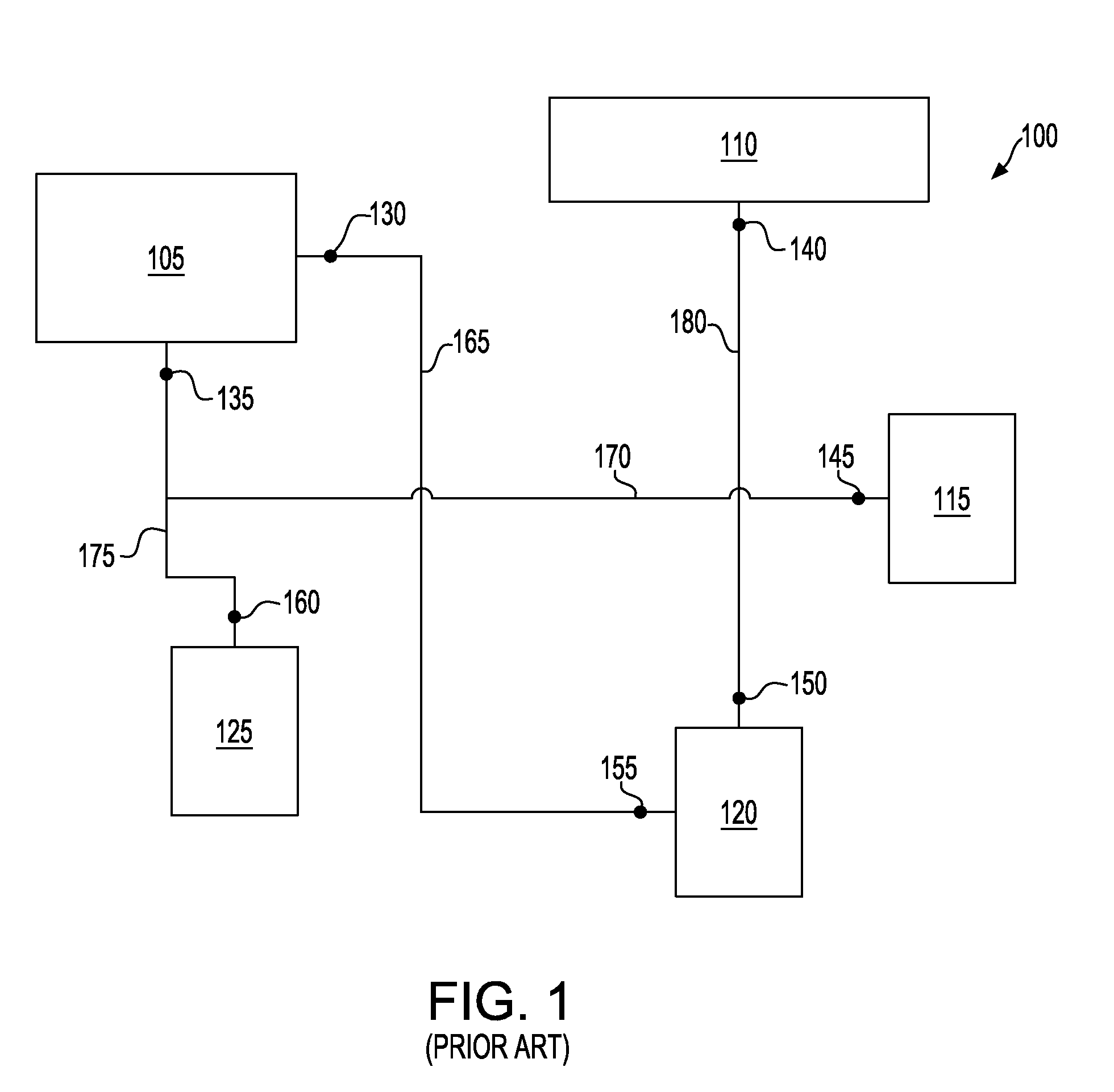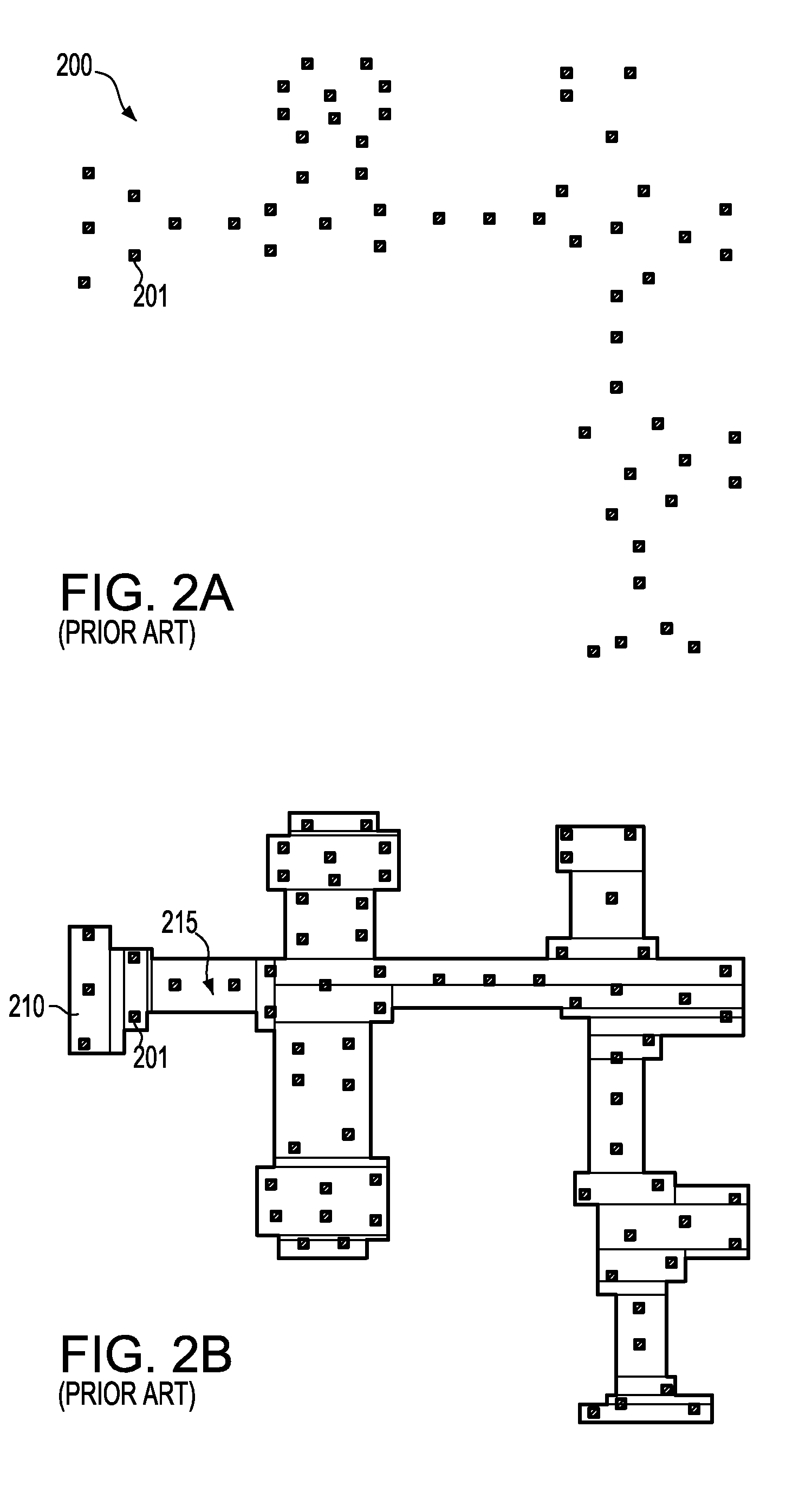Rectilinear covering method with bounded number of rectangles for designing a VLSI chip
a technology of vlsi chips and rectangles, applied in the direction of instruments, computing, electric digital data processing, etc., can solve the problems of increasing the time-to-market introduction, increasing the cost of manufacturing, and the current design tools are presently reaching the limit of efficiency and speed, so as to reduce the area of metal layers, reduce the cost of manufacturing, and reduce the effect of total real esta
- Summary
- Abstract
- Description
- Claims
- Application Information
AI Technical Summary
Benefits of technology
Problems solved by technology
Method used
Image
Examples
Embodiment Construction
[0064]In describing the preferred embodiment of the present invention, reference will be made in conjunction to FIGS. 5-15, wherein like numerals refer to like features.
[0065]In accordance with one embodiment of the present invention, a flow chart is shown with reference to FIG. 5.
[0066]In step 501, a set of input points n is provided, the number of input points including terminals of the netlist. In another embodiment, the number of input points includes a pixilated source generated by an SMO program. In still another embodiment, the number of input points is shown to include the errors generated by ORC or DRC programs.
[0067]The maximum number of rectangles k is a parameter similar to the one provided in Step 501. The input parameter k defines the ‘simplicity’ of the output rectilinear polygon, wherein the output rectilinear polygon has the smallest area and the rectilinear polygon is covered by the maximum number k of rectangles.
[0068]In the next Step 502, the n input points are f...
PUM
 Login to View More
Login to View More Abstract
Description
Claims
Application Information
 Login to View More
Login to View More - R&D
- Intellectual Property
- Life Sciences
- Materials
- Tech Scout
- Unparalleled Data Quality
- Higher Quality Content
- 60% Fewer Hallucinations
Browse by: Latest US Patents, China's latest patents, Technical Efficacy Thesaurus, Application Domain, Technology Topic, Popular Technical Reports.
© 2025 PatSnap. All rights reserved.Legal|Privacy policy|Modern Slavery Act Transparency Statement|Sitemap|About US| Contact US: help@patsnap.com



